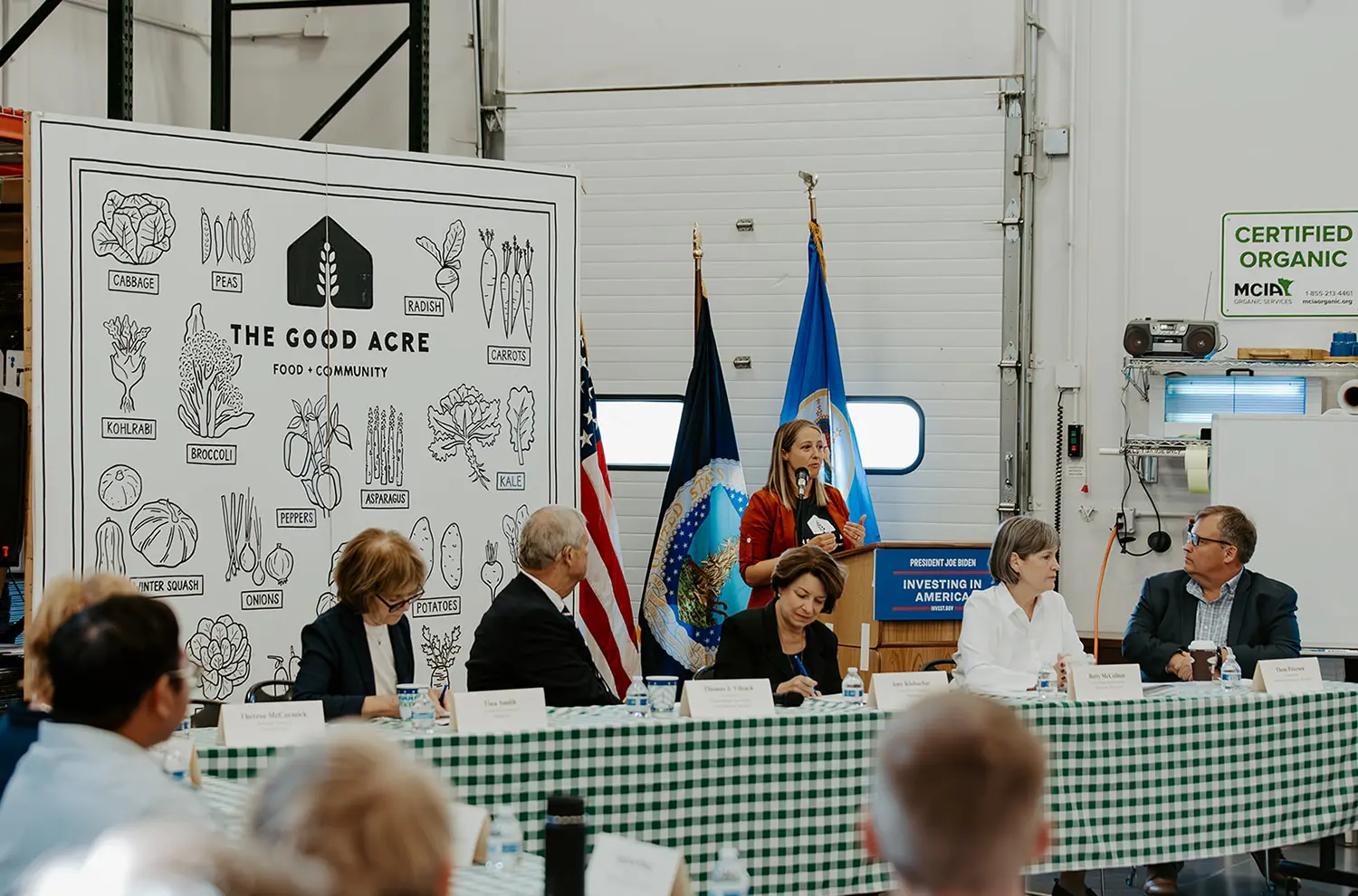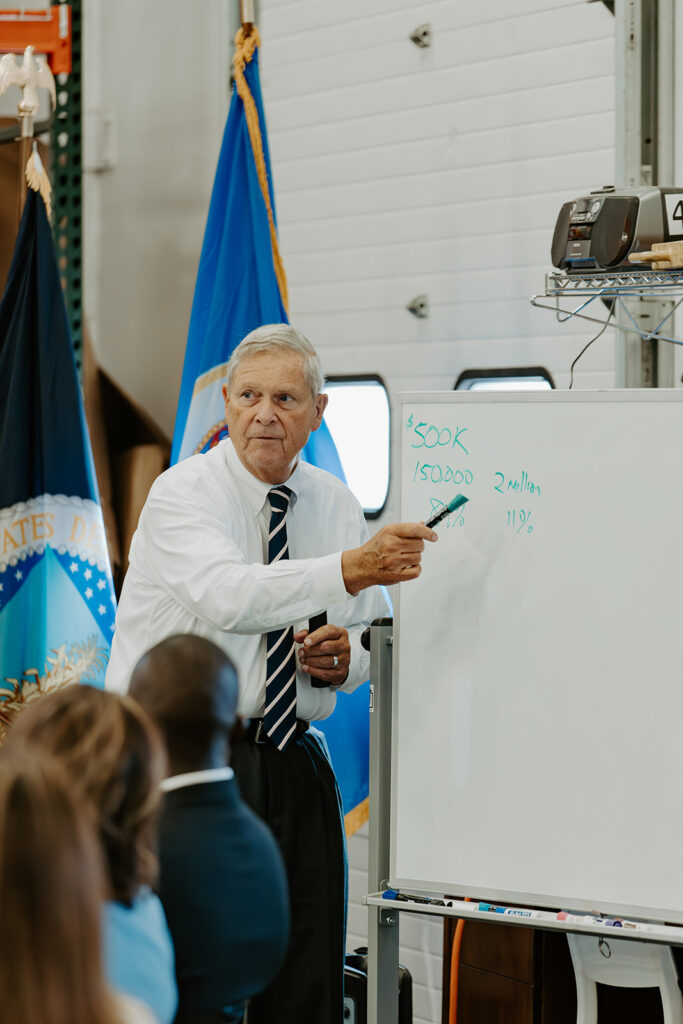Secretary Vilsack Visits The Good Acre

This past Monday, August 28th, we had the honor of hosting Secretary of the United States Department of Agriculture, Tom Vilsack, Senators Tina Smith and Amy Klobuchar, Congresswoman Betty McCollum, and MDA Commissioner Thom Petersen for a meeting that brought together policymakers and community leaders to discuss the impact of USDA investments and initiatives in our region. Secretary Vilsack also used this event to announce $230 million in new funding from the Biden-Harris administration for rural development projects in Minnesota.
The event highlighted the Biden-Harris Administration’s commitment to their Investing in America initiative, which centers on revitalizing the economy from the bottom up and fostering inclusivity for all. The USDA’s support of local food systems aligns with this agenda by strengthening regional supply chains, supporting grant and loan programs for diversified farms, and forging new market connections which are essential for creating a more robust and resilient food system.

During the event, Secretary Vilsack rolled up his sleeves and illustrated for us all via whiteboard, the reality of wealth distribution within the US farm economy. He alluded to his predecessor’s infamous “Get Big or Get Out” comments, noting that 89% of farm income goes to those who are already big, with annual revenues over $500,000. He shared our concerns about this and shared with us the various programs that the USDA offers to provide options so that the millions of small and mid-size farmers in our country can thrive. Some of those options include investments in climate-smart agriculture, local ag marketing, and value-added grants.
Vilsack also gave a nod to the Region Five Development Commission (R5DC) which was represented on the panel by their Executive Director, Cheryal Hills. In an effort to bolster a more resilient, diverse, and competitive food system in Minnesota and the Dakotas, R5DC was recently named a Regional Food Business Center by the USDA. Hills highlighted how the supply chain disruptions revealed during the pandemic demonstrated our collaborative potential and adaptability. The designation as a Regional Food Business Center, and the funding that comes with it, will help R5DC to provide the technical assistance and capacity building needed to empower farmers, ranchers, and other food businesses in our region, enabling them to innovate in today’s dynamic food landscape. As Vilsack put it, it’s not get big or get out, “It’s get entrepreneurial.”

Following Hills remarks, TGA farm partner, Onesmus Mutio, owner of Smarter Life Organic Farm in Bradford Township and representative for the African Growers and Producers Alliance, got to share his story. Onesmus first got connected to us through our LEAFF program in 2022, and with the help of an FSA loan, was able to close on farm land last December. When talking about the importance of the market access programs we offer, Onesmus says that “The Good Acre is a household name among African producers” and that investments into increased market access is giving him and farmers like him hope for the future. He also expressed how the Minnesota Department of Agriculture’s Emerging Farmer Working group has helped him to connect with USDA programs like NRCS which offer resources and funding for farmers looking to incorporate high tunnels into their farming operations.
The notable presence of Secretary Vilsack, Senators Smith and Klobuchar, and Congresswoman McCollum, along with the discussions that transpired, underscores the power of partnerships between government and local organizations like ours in steering positive change within our food system and nurturing vibrant rural communities. Their visit reinforces that the current administration is committed to funding food system investments that foster positive outcomes and build a brighter, more equitable, agricultural landscape in Minnesota and beyond.